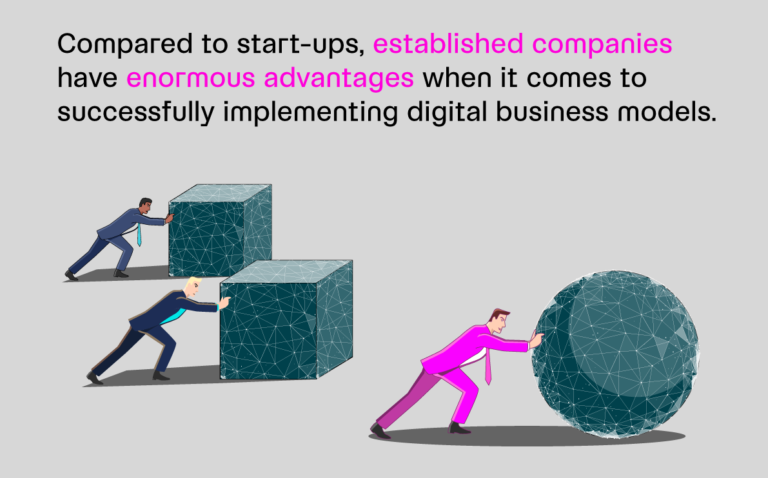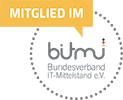Agile software development is becoming more popular than ever. Startups and established companies alike are adopting the ritual-based system of autonomous teams, taking an adaptive approach to rapid development and release of features.
The key advantages of Agile software development are:
- Fixed scheduling and task delivery with easy budget control.
- Quick MVP (minimum viable product) completion with limited bugs.
- Transparency for all stakeholders.
- Adaptable, with continuous testing and improvement.
The task of the agile project manager is to enable flexibility and adaptability without sacrificing organization. Especially in this age of remote work, the right software tools are essential to keep the project on track in the agile environment, allowing development teams to self-manage while maintaining a birds-eye view of development progress.
Here are the top tools for Agile software development …
Source Control Tools
Git
This market-leading source-control platform uses Distributed Version Control Systems (DVCS) to track changes and reduce errors.
This distributed model means that Git projects don’t have a central code repository, making it easy for each development team to work autonomously and then merge their code later. Tasks in Git exist as “branches,” which can be merged into one central trunk and quickly pushed into the deployment pipeline.
By working concurrently and merging code as they go, Git users can push a minimum viable product (MVP) to market quickly, a key advantage of Agile development, where it can start collecting user feedback and adapt. It also provides stakeholders a transparent window into coding progress and assess whether the sprint is on schedule.
Open-source and maintained by a robust community, Git is free to download in its desktop software version. Github is a Cloud-based version of Git for companies that don’t want to host Git on their computers.
Continuous Integration and Deployment Tools
Jenkins
Designed by Oracle after it acquired Sun Microsystems, Jenkins rules the roost of continuous integration and deployment tools with a range of functions and features useful to agile development for the managing of environments and the building, testing, and deployment of code.
Jenkins has so many devoted followers because it is easy to configure and customize, with a limitless selection of plugins to enhance what is, at its core, a simple and intuitive core interface. This allows for the kind of continuous testing, improvement, and adaptability that characterizes Agile development.
Easy to install and free of charge, Jenkins supports Git as a platform for continuous integration and delivery, making it one of the most useful agile software development tools.
Team Management Tools
Active Collab
Designed with coders in mind, Active Collab is one of the most useful agile project management tools for software development. Available in both desktop or in the Cloud, Active Collab apes other project management tools by creating workspaces of columns and task cards, which can be assigned, reassigned, given due dates and checklists, and moved from column to column as the task progresses. Project managers and team members can glance at the Active Collab workspace for a bird’s eye view of tasks in progress.
Active Collab makes it easy to assign roles and design the sprint schedule, helping keep an accelerated to-market strategy on track and within budget.
What makes Active Collab one of the world-class agile software development tools is its support for collaborative writing, allowing autonomous teams to collaborate on documentation. This eliminates a key logjam in the way of continuous deployment. Active Collab also includes useful budgeting and reporting features, features that solidify its reputation as one of the more effective agile project management tools for software development.
Leankit
Anyone who has been to a sprint-planning meeting is intimately familiar (perhaps overly familiar) with the sight of the Kanban or Scrum board, a whiteboard scattered with color-coded cards. For agile teams working remotely, this begs the question—where’s the whiteboard. Can you even plan a sprint without one?
Leankit brings the agile whiteboard into the Cloud. This specialized SaaS platform mimics an agile whiteboard and allows remote team members to view the board in real time. This is one of the most crucial agile software tools for project management because it prevents duplication of effort. It’s easy to assign tasks, set a sprint schedule, and keep track of the product backlog and burndown.
Leankit is affordable and comes loaded with multiple board view templates, lean metrics, and reporting tools that agile project managers can use to manage project portfolios, as well as track issues and bugs.
Axosoft
A purpose-built agile software tool for project management, Axosoft includes a number of features tailor-made for agile, including a release planner, time estimator, stack ranking tool, burndown chart, product backlog manager, and daily scrum mode. Axosoft even lets you visualize tasks as Kanban cards, further digitizing the agile development process for remote work.
The Axosoft release planner allows agile project managers to tab through tasks, bugs, and user stories, with the projected ship date prominently displayed for the good of the entire team’s blood pressure and panic pulse.
Best of all, Axosoft features a customer portal so the agile team can directly receive customer feedback. Since agile development depends on customer feedback to adapt, this feature makes Axosoft one of the most indispensable agile software development tools.
Planbox
Every agile sprint has a “burndown chart,” a list of tasks to check off that serves as a progress bar for the sprint. Planbox is an easily-configurable agile software tool for project management that allows agile project managers and team members to track the progress of the burndown chart and the sprint.
The Planbox evaluation tool makes sprint retrospectives even more thorough, while the customer feedback tool helps keep track of bugs and enable adaptation on the part of the agile development team.
Planbox also includes a time tracking feature to keep a record of how long each team member spends working on each task and using that time-on-task metric to estimate a completion time for the task. One of the best agile project management tools for software development.
Agile Estimation Tools
JIRA
While not the simplest of the agile software tools for project management, JIRA by Atlassian is an ideal tool for people who want to integrate their agile project management with other agile software development tools by Atlassian, including Git hosting products Stash and Bitbucket. It’s a comprehensive tool to track issues, bugs, boards, epics, and custom fields.
JIRA includes a suite of agile software tools for project management, including:
- Confluence, a task-listing tool that mimics a Kanban board in its organization of the agile workflow.
- HipChat, a messaging app indexes all discussions related to each task.
Final words
Different agile software development tools will be better suited for different agile teams. The best way to pick the right ones for your agile team is to get your hands dirty and start playing around with them. However, some combination of the above tools is likely to be perfect for remote agile teams to work autonomously, collaborate seamlessly, and fix problems and respond to feedback with … agility.
At Venture Leap, we help entrepreneurial teams build and launch their digital products. Get in touch or book a free session below if you want to know how can take your idea to the next step and develop a minimum viable product that works.

Dr. Daniel Werner –
Co-Founder Venture Leap
Let’s talk about your project!
At Venture Leap, we help entrepreneurs realize their vision – Let’s chat about how you can go from an idea to a marketable MVP in 3 months!




